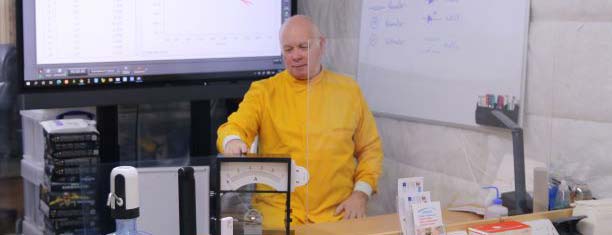How can spinning a single wire like a skipping rope connected to a beam galvanometer show electricity being generated? Nothing happens when both wires are spun together, but electricity is made if one of the pairs spins. And where does this energy come from? Fooled the students for quite a while. When a wire is passed through a magnetic field, a voltage, also known as an electromotive force (EMF), is generated in the wire. According to Faraday's law of electromagnetic induction, a changing magnetic field will induce an electromotive force (EMF) in a conductor. The EMF causes a flow of electric charges, which is an electric current.
In other words, the magnetic field acts as the source of energy that drives the flow of charges in the wire. The magnitude of the induced current depends on the strength of the magnetic field, the speed at which the wire moves through the field, and the length of the wire inside the magnetic field.
A beam galvanometer is a direct current (DC) electrical meter used to measure electrical current. It consists of a coil of wire suspended between the poles of a magnet. When a current flows through the coil, it creates a magnetic field that interacts with the magnetic field of the permanent magnet, causing the coil to rotate. The rotation angle is proportional to the magnitude of the current being measured. This movement is typically displayed on a scale or read out using a pointer. The coil is often attached to a lightweight metal beam or needle to increase its sensitivity, hence "the beam galvanometer."












